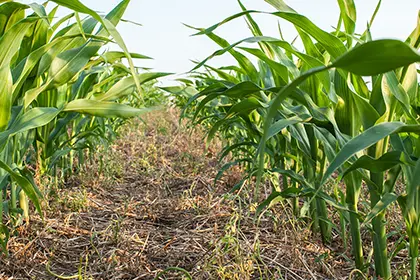
Effective ways to boost your soil’s health
 Soil health is a long-term investment, and even modest improvements to areas of the soil microbiome can translate into benefits that directly influence your bottom line.
Soil health is a long-term investment, and even modest improvements to areas of the soil microbiome can translate into benefits that directly influence your bottom line.
“What’s novel about soil health is that, like human health, there’s a living component to it,” said Willbur-Ellis Agribusiness National Nutrition Technical Manager, Carl Bruice.
By increasing organic matter and improving the soil microbiome, you improve the physical, chemical and biological functions of the soil, establishing a stronger foundation for higher crop yields and resilience to environmental pressures.
Four effective approaches to boosting soil health include enhancing soil fertility, reducing tillage, increasing cover crops and applying organic amendments.
Enhancing soil fertility contributes to healthier soil
“Establishing good fertility is probably the first thing one can do to maintain good soil health,” Bruice said. “Fertility impacts soil health by stimulating production of organic matter, the energy source for soil microbes, which are very viable components of soil health.”
By increasing organic matter, you also improve water-holding capacity and the cation exchange capacity (CEC), two important properties influencing soil structure stability and nutrient availability. As you build more natural fertility, you also potentially reduce the need for supplemental fertilizer.
“Proper fertilization practices—knowing your crop’s nutrient demand curves and applying nutrients timed at peak demand to minimize waste and maximize nutrient uptake efficiency—are very important. Good fertility practices maximize production to the grower’s benefit and to the overall quality of the soil,” Bruice explained.
 Reducing tillage and increasing cover crops improve soil structure
Reducing tillage and increasing cover crops improve soil structure
“Tillage equipment degrades soil structure by removing residue from the surface layer,” explained Greg Binford, Willbur-Ellis Agribusiness Director of Advanced Agronomy training. “By adopting reduced till and no-till practices, you can decrease residue decomposition and increase soil organic matter. And that is very important to good soil structure.”
Another way to improve soil structure and microbial activity is to add cover crops. Properly planned and executed, cover crops reduce soil erosion and run-off, and increase water infiltration. Over time, cover crops will also increase soil organic matter, leading to improved stability and nutrient-holding capacity for plant growth.
“With roots in the soil year-round, cover cropping can enhance soil microbial activity, helping to improve soil structure,” Binford added. “Crop rotation does the same thing, giving you greater diversity of microbes and helping to reduce diseases that can build up when growing the same crop year after year.”
Adding organic amendments increases water- and nutrient-holding capacities
When we can add organic matter to the soil, as a manure or compost, it benefits soil structure and ultimately, soil health.
“One of the most important properties of soil health is organic matter,” explained Binford. “Soils with higher organic matter tend to have better soil structure with greater water-holding and nutrient-holding capacities. With more water in the soil, you get better infiltration and less run-off, which helps reduce soil erosion. You’re also keeping many of the key nutrients plants need in the soil, such as calcium, magnesium and potassium.”
More organic matter also allows for better oxygen levels in the soil, which is important for soil microbes.
To learn more about improving soil health on your operation, connect with your local Wilbur-Ellis agronomist.


 Reducing tillage and increasing cover crops improve soil structure
Reducing tillage and increasing cover crops improve soil structure